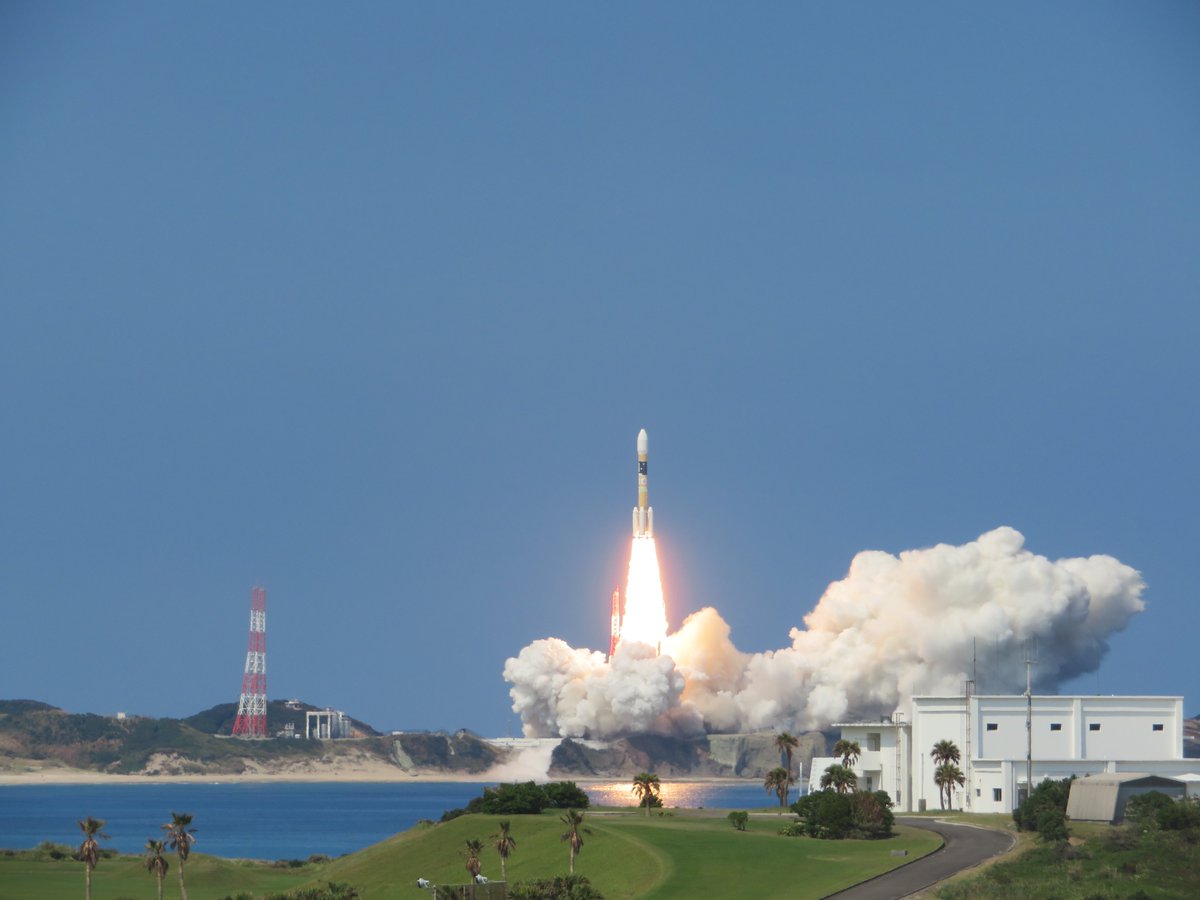
H-IIA
In-activeMitsubishi Heavy Industries (MHI)
Dec. 18, 2006
Description
H-IIA (H2A) was an expendable launch system operated by Mitsubishi Heavy Industries (MHI) for the Japan Aerospace Exploration Agency. The liquid-fueled H-IIA rockets have been used to launch satellites into geostationary orbit, to launch a lunar orbiting spacecraft, and to launch Akatsuki, which studied the planet Venus. Launches occur at the Tanegashima Space Center.
Specifications
-
Stages
2 -
Length
53.0 m -
Diameter
4.0 m -
Fairing Diameter
4.0 m -
Launch Mass
445.0 T -
Thrust
2260.0 kN
Family
-
Name
H-IIA -
Family
― -
Variant
204 -
Alias
― -
Full Name
H-IIA 204
Payload Capacity
-
Launch Cost
$90000000 -
Low Earth Orbit
― -
Geostationary Transfer
Orbit
6000.0 kg -
Direct Geostationary
― -
Sun-Synchronous Capacity
―
Mitsubishi Heavy Industries
Commercial
President: Seiji Izumisawa
MHI 1884Mitsubishi Heavy Industries, Ltd. is a Japanese multinational engineering, electrical equipment and electronics company headquartered in Tokyo, Japan. MHI is one of the core companies of the Mitsubishi Group. MHI's products include aerospace components, air conditioners, aircraft, automotive components, forklift trucks, hydraulic equipment, machine tools, missiles, power generation equipment, printing machines, ships and space launch vehicles. Through its defense-related activities, it is the world's 23rd-largest defense contractor measured by 2011 defense revenues and the largest based in Japan.
H-IIA 204 | Inmarsat-6 F1
Mitsubishi Heavy Industries | JapanTanegashima Space Center, Japan
Dec. 22, 2021, 3:32 p.m.
Status: Launch Successful
Mission:
Inmarsat-6 is the sixth generation of satellites for the London-based global mobile satellite communications operator Inmarsat. It consists of a dual mission to augment both L-band and Ka-band Global Xpress services. Airbus Defence and Space has been awarded a contract by Inmarsat to design and develop the first two Inmarsat-6 (I-6) mobile communications satellites, creating the most versatile mobile services satellites in its fleet. The two I-6 satellites are based on Airbus Defence and Space's Eurostar platform in its E3000e variant, which exclusively uses electric propulsion for orbit raising. The satellites take advantage of the reduction in mass that this electric propulsion technology enables for a dual payload mission, with an exceptionally large next generation digitally processed payload. I-6 F1 and F2 both carry a large 9 m aperture L-band antenna and nine multibeam Ka-band antennas, and feature a high level of flexibility and connectivity. A new generation modular digital processor provides full routing flexibility over up to 8000 channels and dynamic power allocation to over 200 spot beams in L-band. Ka-band spot beams are steerable over the full Earth disk, with flexible channel to beam allocation.
Geostationary Transfer OrbitH-IIA 204 | Michibiki 3 (QZS-3)
Mitsubishi Heavy Industries | JapanTanegashima Space Center, Japan
Aug. 19, 2017, 5:29 a.m.
Status: Launch Successful
Mission:
The Quasi-Zenith Satellite System (QZSS) is a three-satellite regional time transfer system and the satellite-based augmentation system for the GPS that would be receivable within Japan. The primary purpose of QZSS is to increase the availability of GPS in Japan's numerous urban canyons, where only satellites at very high elevation can be seen. A secondary function is performance enhancement, increasing the accuracy and reliability of GPS derived navigation solutions. A single satellite weighs about 4000 kg, has an expected lifetime of 15 years and is put in a elliptical, highly inclined geosynchronous orbit.
Geostationary Transfer OrbitH-IIA 204 | DSN 2 (Kirameki 2)
Mitsubishi Heavy Industries | JapanTanegashima Space Center, Japan
Jan. 24, 2017, 7:44 a.m.
H-IIA 204 | Telstar 12 VANTAGE
Mitsubishi Heavy Industries | JapanTanegashima Space Center, Japan
Nov. 24, 2015, 6:50 a.m.
Status: Launch Successful
Mission:
At an orbital location of 15° West, Telstar 12 VANTAGE will provide coverage of the Americas, Europe, Africa and the Middle East, as well as high traffic maritime zones in the Mediterranean, North Sea, Caribbean and the South Atlantic. The satellite contains 52 Ku-band transponders at 36 MHz.
Geostationary Transfer OrbitH-IIA 204 | Kiku-8
Mitsubishi Heavy Industries | JapanTanegashima Space Center, Japan
Dec. 18, 2006, 6:32 a.m.
Status: Launch Successful
Mission:
ETS-VIII (Engineering Test Satellite) is to be launched in 2006, with the main purpose of dealing with the increasing demand for digital communications, such as mobile phones and other mobile devices. The satellite, with a gross weight of around three tons and a diameter of 40 meters, has two Large Deployable Antenna Reflectors (LDAR) and two Solar Array paddles. One LDAR, about the size of a tennis court, is one of the world's largest geostationary satellites. Its size will enable direct communications with a geostationary satellite that covers all of Japan, making mobile communications more reliable. Currently under development are Large Deployable Antenna Reflectors with metal-mesh, high-power transponders, and on-board processors. The technologies used in the development of these LDARs will be applicable to other large space structures. A subscale test of the LDARs was flown as the LDREX experiment.
Geostationary Transfer OrbitLong March 12A
Demo Flight
Long March 12A Pad - Jiuquan Satellite Launch Center, People's Republic of ChinaFirst test launch of CASC/SAST’s Long March 12A rocket, with a dummy payload. The rocket’s 1st stage attempted to land on a landing pad about 300 km …
HANBIT-Nano
Spaceward
HANBIT Pad - Alcântara Space Center, Federative Republic of BrazilMaiden orbital launch attempt for the South Korean stratup Innospace and its HANBIT-Nano small launch vehicle. Onboard this flight are five small sat…
H3-22
Michibiki 5 (QZS-5)
Yoshinobu Launch Complex LP-2 - Tanegashima Space Center, JapanQZSS (Quasi Zenith Satellite System) is a Japanese satellite navigation system operating from inclined, elliptical geosynchronous orbits to achieve o…
Electron
The Wisdom God Guides (iQPS Launch 6)
Rocket Lab Launch Complex 1B - Rocket Lab Launch Complex 1, Mahia Peninsula, New ZealandSynthetic aperture radar Earth observation satellite for Japanese Earth imaging company iQPS.
New Shepard
NS-37
West Texas Suborbital Launch Site/ Corn Ranch - Corn Ranch, Van Horn, TX, USANS-37 is the 16th crewed flight for the New Shepard program and the 37th in the New Shepard program's history.

